Articles
Study drawing of the plaster head of the Gattamelata
Let’s talk about the stages of a plaster head drawing.
As a model, we will take the mould of the head of the statue, portrayed Erasmo da Narni, also known as Gattamelata.
This head is exceptionally beneficial to study drawing due to its explicit architectonic. In other words, the planes here are obvious and detailed.
In contrast antique female heads have subtle planes, which are hard to be observed.
Nowadays another problem takes place when plaster heads, provided by popular art-shops, look like if they were smoothed with sandpaper. For instance, the head of Gattamelata sold in the art saloons does not resemble the original.
In this particular case we will take a mould made in the Soviet Union. The light source is placed above the model for the form-making effect. At the same time it is important to not let the shadows of superciliary arches and nose to be immense.
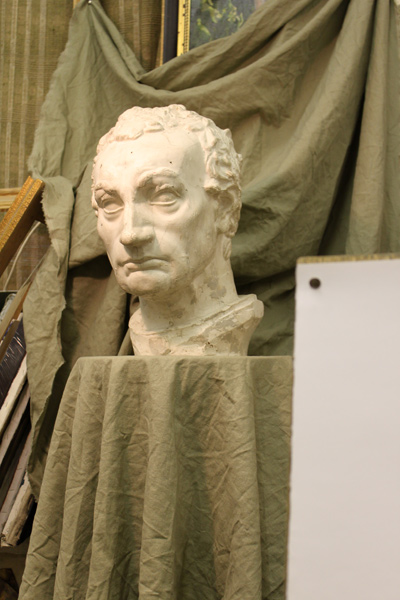
At the beginning the lines should be faint; there is no need of strong pressure into the pencil. It must be considered, that pictures used to illustrate this article are way lighter in real life, especially during early stages.
Drawing starts with the arrangement of the figure on the paper. The composition must be found correctly from the very first steps, which basically means that proportions and the nature of the model are supposed to be faithful.
Otherwise father changes and elaborations may modify the previous organization significantly.
Anyways, if the painter from the very beginning decide what is the most important, (where is the centre), slight alterations will not spoil the composition.

The composition of the study of drawings like the one we are talking about in this article is quiet simple. As a result students often ask themselves whether they should get it into theirs heads at all. The point is that all principles of the organization may be used for drawings and arts in general, and not only for this particular picture. Forming right habits and approaches will help you in your future career. You scarcely dream to become a master of drawing plaster heads…
We start with subtle lines considering two
causes: 1. light stroke might be effortlessly erased, which means that it is easy to make corrections; 2. When you press the pencil with force your hand is tensed, which lead your mind to micro-tension as well. Now it needs to control the hand instead of observing the model.
Disposing the main parts do not forget that WE DO NOT DRAW DETAILS AS SUCH, BUT WE DRAW DETAILS IN ORDER TO FORM THE ENSEMBLE. In real life that means looking at the model and at the picture entirely, trying to take the main proportions of the head as correctly, as it possible.
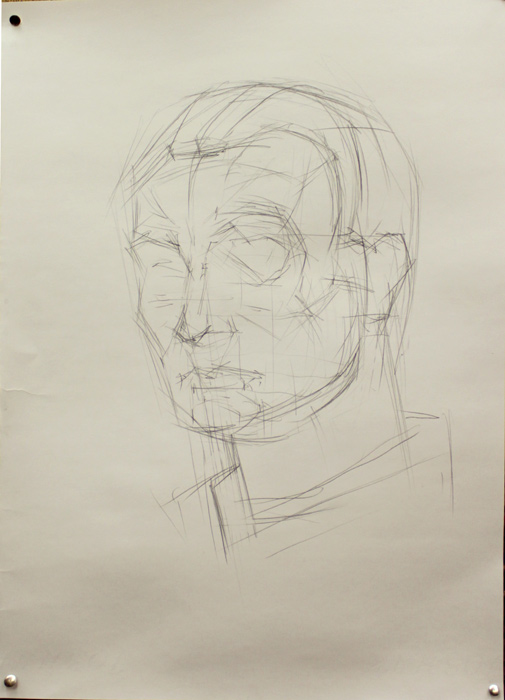
However, the main elements could not be taken abstractly. That’s why we catch all characteristic features, but do not work on them for a long time. All we need so far is to make fast marks.
It is better to make the parts located closer to us more high contrast, than distant areas. That is needed to create a sense of volume and space. At the same time as long as you are not sure that all details are taken faithfully, all shades must remain light. In this case it is easy to amend the drawing.
When the main characteristic proportions have been measured by eye, it would be not out of
place to size them, beginning with the biggest ones.
Also, put a pencil horizontally and vertically to the model and to the picture to check if the inclination is taken properly.
Why should you first evaluate the situation by eye, and only afterwards size everything? The reason is to give your mind the chance to develop the ability to measure things. Gradually it will make good progress.
Little by little the architectonics of the shape of the head should become clear. Now slight chiaroscuro could be added to make the volume to appear.
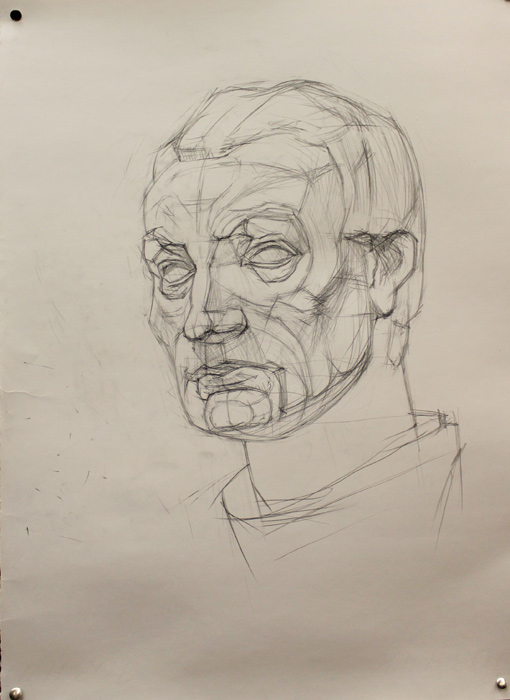
It is important to put shadows considering the planes (surfaces) of the shape of the head and the borders where planes meet. A good idea is to come closer and to observe the model from different places.

To obtain a strong concept of the construction of the head, a passionate interest is demanded. You should try to notice the planes and the borders where surface turns looking at all plaster and life heads.To scrutinize the structure of the head planes we use a special study model, where all surfaces and borders between them are shown obviously.
(which we call “obrubovka”) –


That study head should be drawn a lot of times from the various angles. In addition to that it is way more useful to do plenty of small (from 8 to 10 sm) long sketches from the different views, than to make two full-sized pictures. Moreover, from the location you are drawing the hole shape of the head might not be observed adequately. Due to this, don’t be shy to come closer to examine the shape from all the sides (sometimes even touch it).
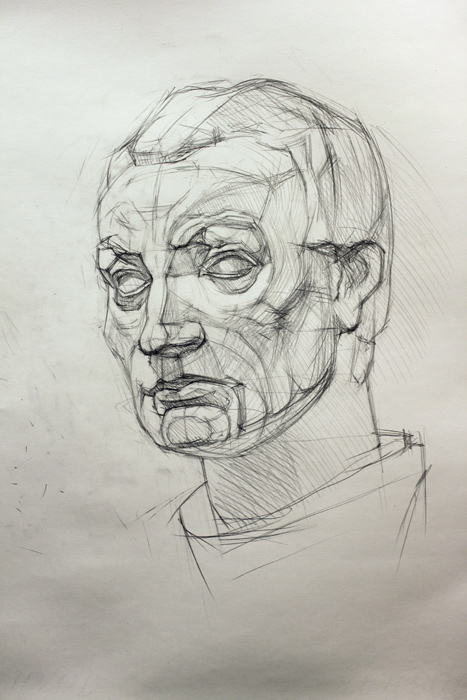
Once you become more confident about main proportions and big parts of the head ,you can gradually add shading. Close elements should be drawn more crisply to form the volume and space. Space means that more contrast areas seem to be closer than those which are made using more gradual change of tone. Obviously, parts which are actually located nearby (in this case it is nose, close cheek bone, close superciliary arch etc) are supposed to be done more actively. Considering this while drawing is needed to help us to give a sense of the entire volume and the underlying form of the head, which is similar to the shape of an egg.

Meanwhile, turning linear drawing into the tonal one we use to make more precise the relations
between parts. It is easier to compare when slight shading is done because in real life we see various tonal areas and no pencil lines. That’s why it is essential to check the proportion and the shapes up to the end of the work.
As you can see, the details are added moderately. At the same time the stronger the confidence about main parts, the easier details could be put on their actual places. The more detailed every area becomes in particular, the easier the comparison between main parts is. Not only the comparison of elements become easy, but also the correction of the location of small details. The more precise the close details, the more intense the sense of volume and space and so on.
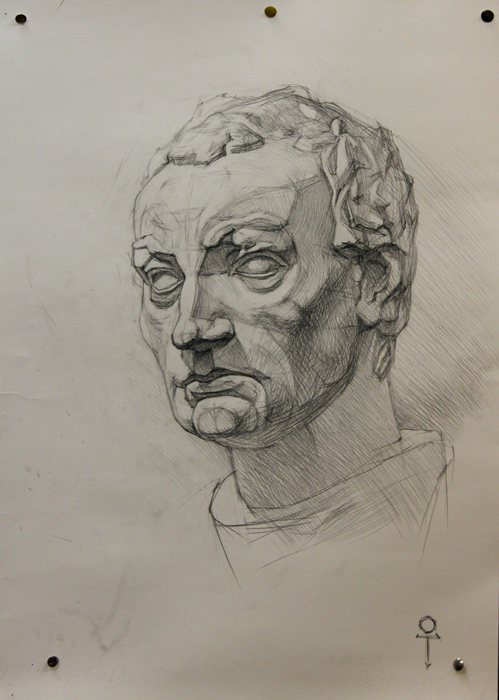
Thereby, the entire impression of the whole head is always minded. Meantime, the more shading is taken,
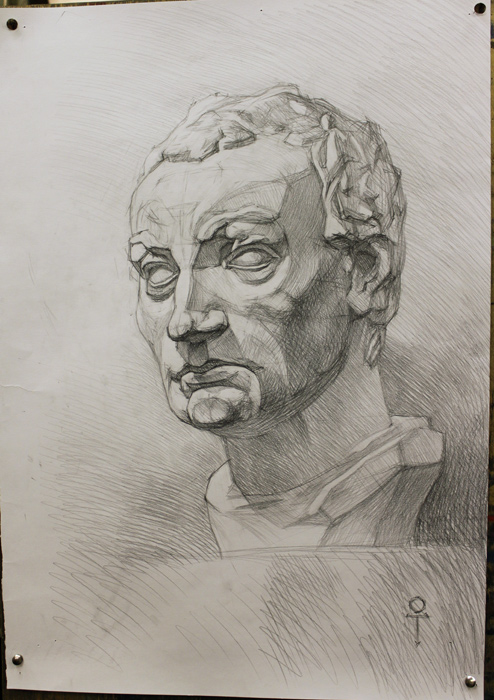
the more important to look at the drawing with defocused eyes. What does it mean? In ordinary life when we watch an object, we normally see it clear, in all details, which we mention in turns.
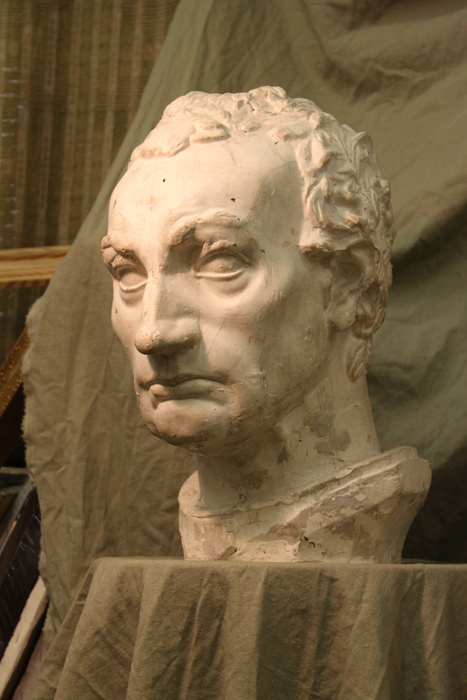
Due to this our gaze is shifted from one detail
to another, scanning them, but not being able to view the entire situation. It is just not possible and not really required to watch absolutely focused a lot of areas at the same time. Meanwhile, the ability to see the ensemble is crucial.
If you observe the entire model it is going to be slightly fuzzy. That is what you need. The way of looking which is needed to be used in addition to the normal, “jumping” view. It is also possible to skim the model and your drawing, without focusing. All of that happen usually when person is deep in thoughts and looks absently. The famous quote of Chistyakov states: “When you draw an ear, look at heel”. You may interpret this in many different ways but the fact is to arrange the details easier scanning the whole object. While tonal drawing is being done it is necessary to see the total chiaroscuro and crisply viewed details normally disturb painters.
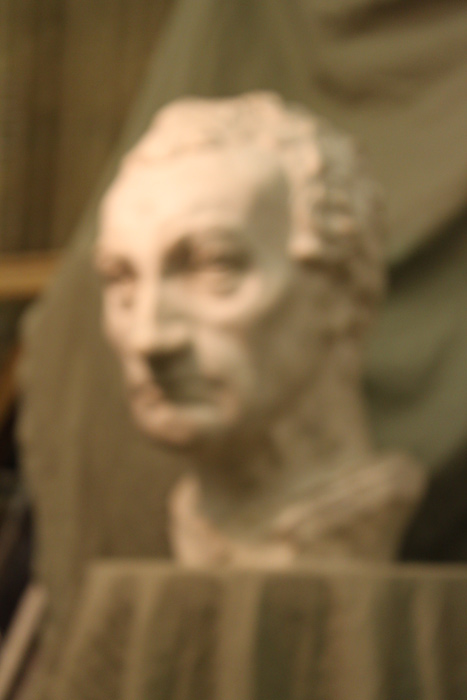
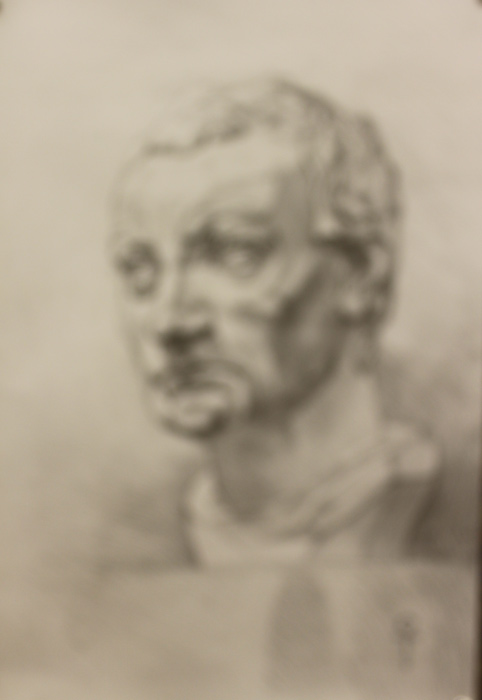
Meantime, the more defocused the look is, the less details interrupt our vision and, as a result, we can see the entire picture and main proportions more objectively.
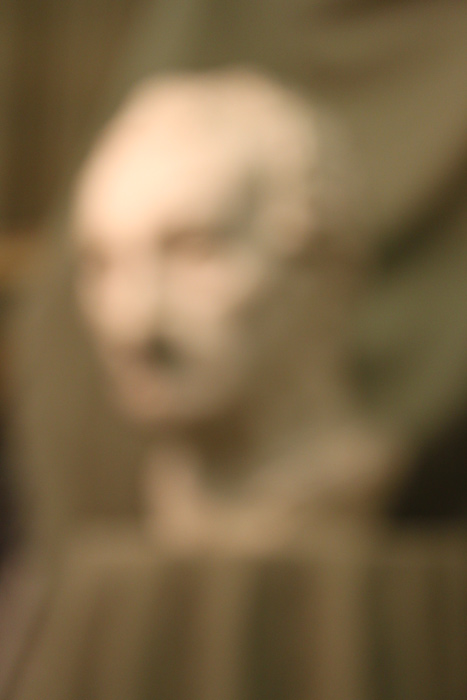

That vision of the principal tonal relations enables to make chiaroscuro more correctly.
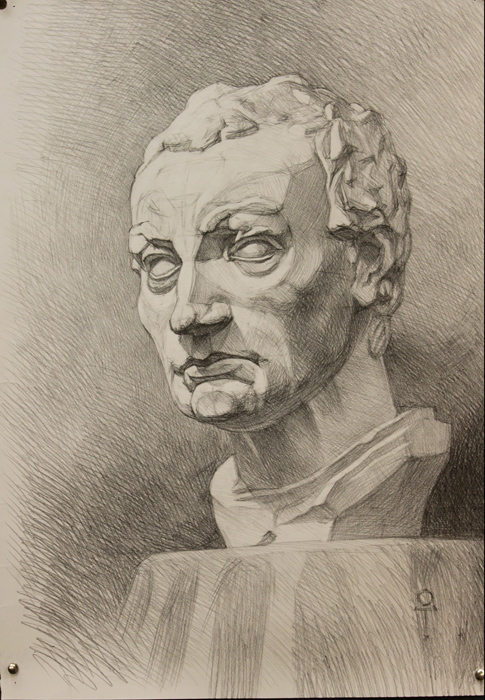
At the same time it is also important constantly check the linear relations as well: proportions of the head in general, the location of small and big parts etc. The capacity to look defocused does not allow to draw without watching your work and the model in the distance. On the contrary, in the distance it may be done easier and more effective.

Oleg Toropygin
If you have any questions or wishes, feel free to write us
Адрес электронной почты защищен от спам-ботов. Для просмотра адреса в вашем браузере должен быть включен Javascript.